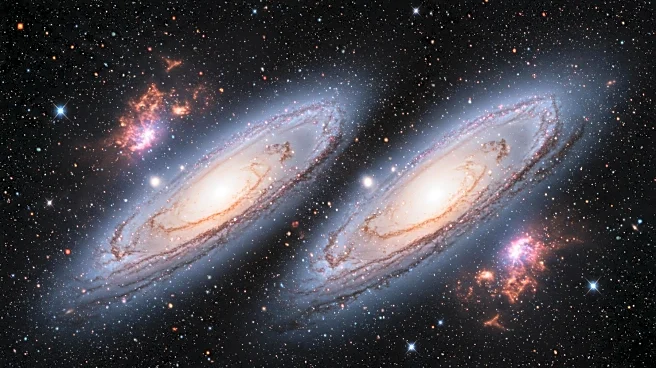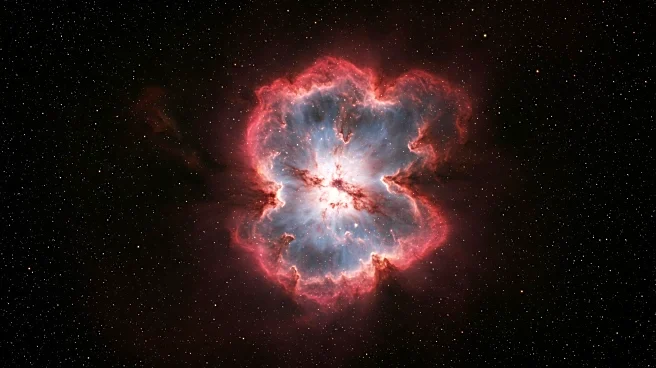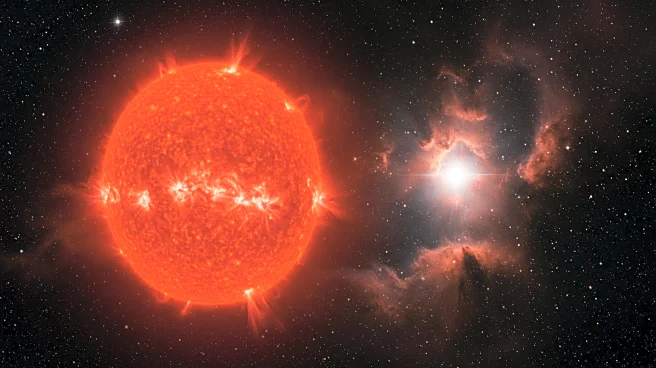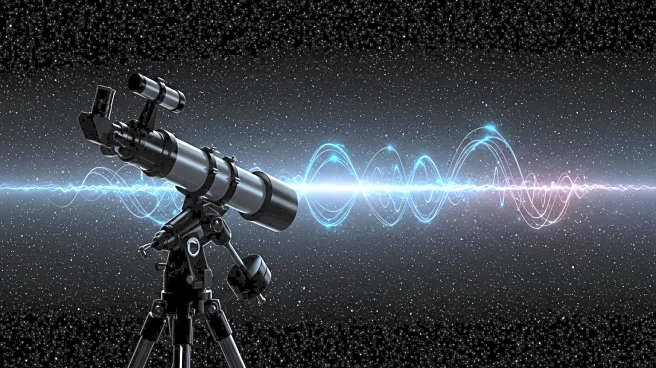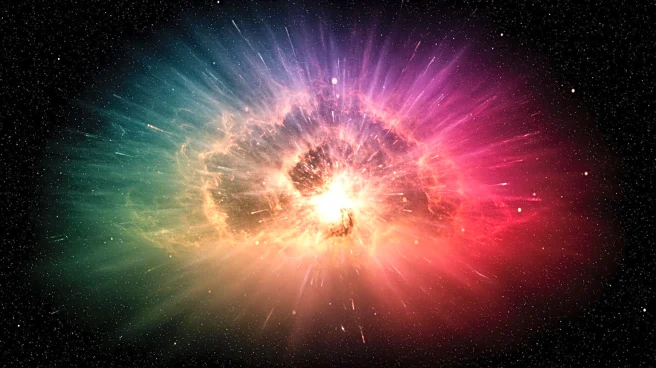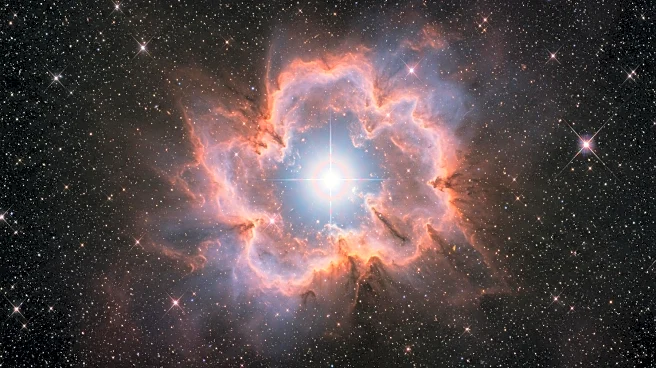Rapid Read • 8 min read
Astronomers have identified a colossal molecular cloud within the Milky Way galaxy, named M4.7-0.8, which weighs as much as 160,000 suns. This discovery was made using the Green Bank Telescope, which located the cloud approximately 23,000 light-years away. The cloud is situated within a dusty lane of the galactic bar, a region crucial for material transport to the galaxy's core. This finding is significant as giant molecular clouds (GMCs) are essential for understanding star formation and galactic evolution. The cloud spans nearly 200 light-years and has a notably cold dust temperature of about 20 Kelvin. Within M4.7-0.8, two primary structures have been identified: the 'Nexus' and the 'Filament', which indicate dynamic processes within the cloud.
AD
The discovery of M4.7-0.8 is pivotal for the study of star formation and galactic evolution. Giant molecular clouds are the primary sites for star formation due to their low-temperature and high-density environments, which facilitate the aggregation of atoms into molecules. Understanding the distribution and characteristics of these clouds provides astronomers with invaluable insights into the processes of star and galaxy formation. This knowledge is crucial for comprehending how galaxies like the Milky Way have developed over cosmic time scales. The identification of potential star formation zones within M4.7-0.8, such as Knot B and Knot E, adds further intrigue and potential for future research.
Future observations of M4.7-0.8 are expected to reveal more about the mechanisms behind star formation and the lifecycle of galaxies. The cloud's unique attributes present a rare opportunity for detailed study, which could lead to groundbreaking discoveries about galactic evolution. As astronomers continue to explore these enigmatic clouds, the potential for new insights into the intricate processes that shape our universe remains vast.
The study of M4.7-0.8 underscores the critical role that giant molecular clouds play in the broader narrative of galactic evolution. By utilizing innovative techniques such as radiotelescopes and multi-wavelength observations, researchers can construct comprehensive images of these vast structures. This approach enhances our understanding of the physical characteristics and dynamic processes occurring within these cosmic giants, potentially redefining our understanding of the cosmos.
AD
More Stories You Might Enjoy
